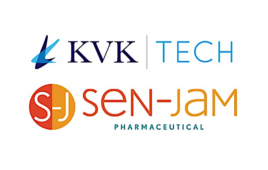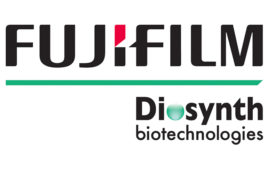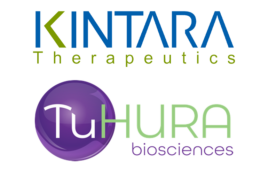Pharmaceutical ERP Software for Stress-Free Regulatory Compliance
Pharmaceutical manufacturers operate in one of the most highly regulated industries – facing an array of restrictions and requirements from the Food and Drug Administration (FDA), Environmental Protection Agency (EPA), Occupational Safety and Health Administration (OSHA), various state and foreign governments, and their individual customers. Integral to meeting these groups’ standards are the various compliance documents they require, such as product labels, Material Safety Data Sheets (MSDSs), SARA reports, Certificates of Analysis (COAs), and shipping papers.
For many drug makers, producing these documents in an accurate and timely manner is a significant challenge, if not an outright headache, because of the use of multiple software systems to run their businesses. When using disconnected systems, spreadsheets, and/or word processing programs to manage data, manufacturers can spend hours or days gathering information, making calculations, and entering the results into word processing documents.
But with today’s technology, this labor-intensive and potentially error-ridden process is unnecessary. As this article will discuss, pharmaceutical manufacturers using a single, fully-integrated pharmaceutical ERP software system can integrate regulatory reporting with all other business processes to solve the compliance document puzzle and make regulatory reporting a stress-free operation.
Puzzle Pieces
The typical process of business growth is how most pharmaceutical manufacturers end up with the patchwork of software systems that complicates reporting. A company may start out managing many processes, such as formulation and quality control (QC), with notebooks and spreadsheets, and others, such as accounting, with standalone software systems. At this stage, any data that must be reported to the FDA, EPA, or other organizations can be readily found among the relatively small amount of data.
However, as business volume grows, more formulas are developed and tested, products are pushed into production, and new customers begin knocking at the door. At that time, manufacturers struggle to fit the data puzzle pieces together to create the reports they need. Perhaps a formula management software system, or a system to handle inventory management was added. Now, with more data being created and stored in more places, generating the required regulatory reports can become time consuming and tricky.
Often, companies using multiple, disparate systems ask one person to handle all reporting. This person, perhaps a technical or compliance director, keeps track of which forms are due at what times, to what organizations, and what information they require. He searches each system for the appropriate data, makes any calculations, enters the information into the right form, and prints the documents. He does this for COAs, product labels, MSDSs, annual SARA reports, and more.
Unfortunately, no matter how diligent this person is, whenever reporting is not integrated with business data, the process is open to inefficiencies and errors. For one, manufacturers create a bottleneck by funneling all reporting to one person. Deadline-sensitive documents may stack up when, for example, this person goes about researching and completing Form Rs – the lengthy SARA reports required for each toxic chemical manufactured, processed, or used beyond certain EPA thresholds. Time spent waiting for documents in the queue is time wasted, perhaps time that shipments can’t go out the door, and this unnecessarily adds to the cost of doing business.
Errors are likely, as well. The director may choose the wrong form, or simply make data entry errors or accidental omissions. When mistakes are passed along to customers, companies may face the costs and customer backlash associated with returned shipments – such as extra freight charges, refunds, and potentially a loss of business. Mistakes reported to the FDA, EPA, or OSHA could results in fines and regulatory scrutiny.
Overall, a multiple-system environment can complicate reporting and put a pharmaceutical manufacturer at a competitive disadvantage.
Putting it all Together
Pharmaceutical manufacturers can create a more efficient and accurate reporting process by integrating all their business processes – formulation, QC/QA, production, inventory control and lot tracking, sales, purchasing, accounting, and regulatory reporting – in one software system designed for the pharmaceutical industry.
When all data is stored in a single, pharmaceutical ERP system, report generation is no longer like trying to assemble a complex puzzle. Because all the pieces required for each document – raw material usage and properties, QC test results, sales order information, formula data, and the like – are all managed in real time within the ERP system, report generation can become an automatic process.
In a well-designed system, companies would set up configurable document templates for each report they are required to produce. A configurable form is one a manufacturer can adapt within the ERP system to fit its business needs, without needing to alter the software’s programming code. A familiar program such as Microsoft Word will let users configure the documents by arranging data fields, logos, and other characters to create the design, and include the data of their choice.
Once configured, the ERP system can automatically populate these forms with the proper data. Each data field on a form will map to a particular data point in the database. Because data from all processes is stored in that single database, there is no need to link to other programs or search disconnected or paper-systems for document generation. When a document is regulated in the system, it’s filled in with the most up-to-date data automatically.
For example, because the system stores all formulation, production history, purchasing, and sales data, it can automatically calculate the hazardous material amounts required for SARA reports and show the figures in the appropriate template fields.
Low-Stress Reporting
With document generation integrated within a comprehensive pharmaceutical ERP software system, drug makers avoid the problems associated with using a patchwork of systems. The puzzle-piece approach to reporting is replaced by a streamlined and compliant reporting process that can provide greater productivity and a competitive edge.
Efficiency is one advantage gained by managing regulatory reports this way. Rather than having your compliance director search each system for data to calculate and plug in to each word processing-based report, the system pulls and populates the data automatically. This saves countless hours over the course of a year, allowing companies to direct their compliance efforts to other processes. In fact, any system user with the proper security clearances can generate a COA or other document once the template has been configured.
Errors are reduced with this type of system, as well, because manual data entry is eliminated. Process controls in a fully-integrated system can also help manufacturers guard against errors that, if unnoticed, could end up on a regulatory document. For example, the QC process in a well-designed ERP system should allow manufacturers to set pre-defined test ranges for each product. Then, if a user enters a value that falls outside that range, the system would provide a screen prompt highlighting the error. Not only does this guard against typos that could end up on important documentation, it also helps you more easily identify products that do, in fact, fall outside QC ranges and need to be altered or discarded.
Conclusion
With all the regulations facing manufacturers in the competitive pharmaceutical industry, companies shouldn’t spend hours preparing their compliance documentation. Utilizing a single, integrated ERP software system designed for pharmaceutical manufacturing can streamline the regulatory reporting process through configurable document templates for a faster, error-free process. With the regulatory compliance document puzzle solved, drug makers can focus on what really matters – their business.
About the author: Jay Deakins is the President of Deacom, Inc., the producer of an integrated accounting and ERP software system for mid-to-large-sized pharmaceutical and chemical manufacturers with hard-to-handle requirements. By making complex issues simple, Deacom helps manufacturers streamline business processes to maximize productivity and profitability. Contact Jay at info@deacom.net or visit www.deacom.net.




